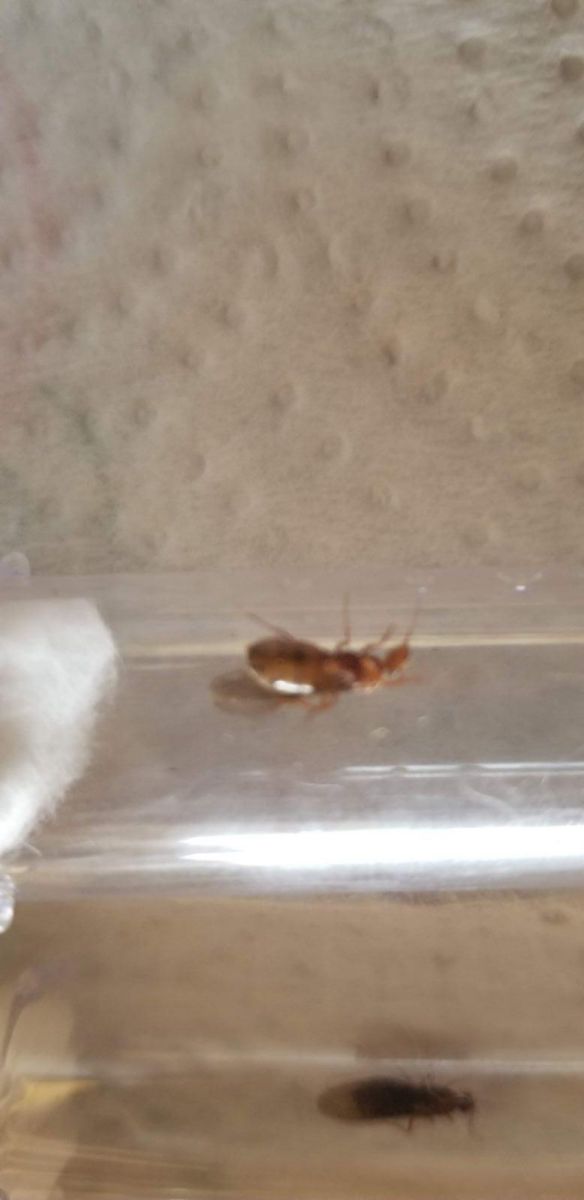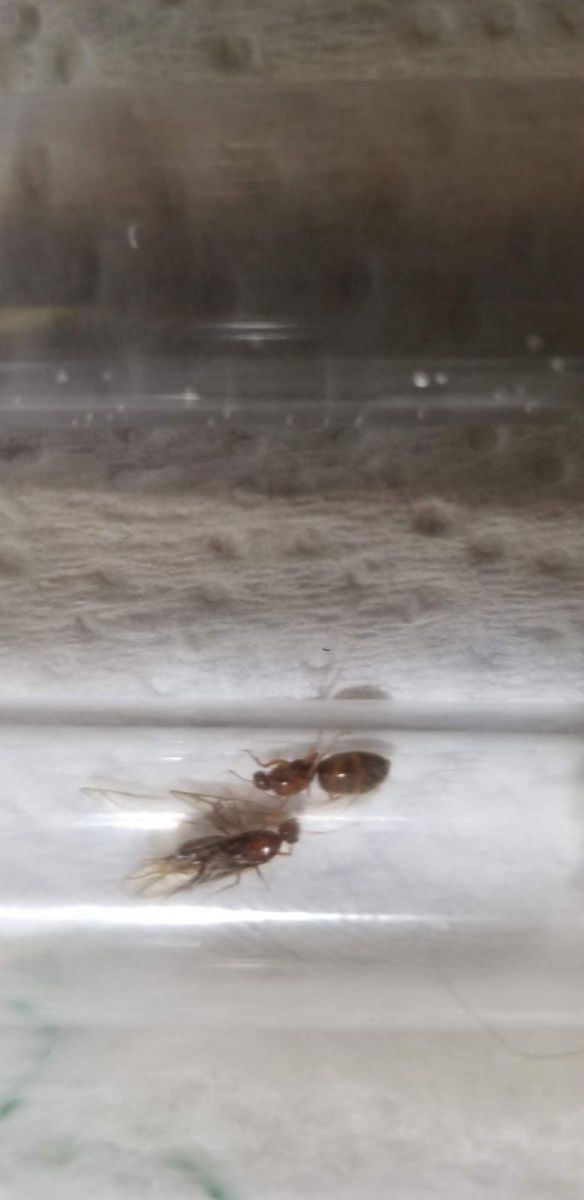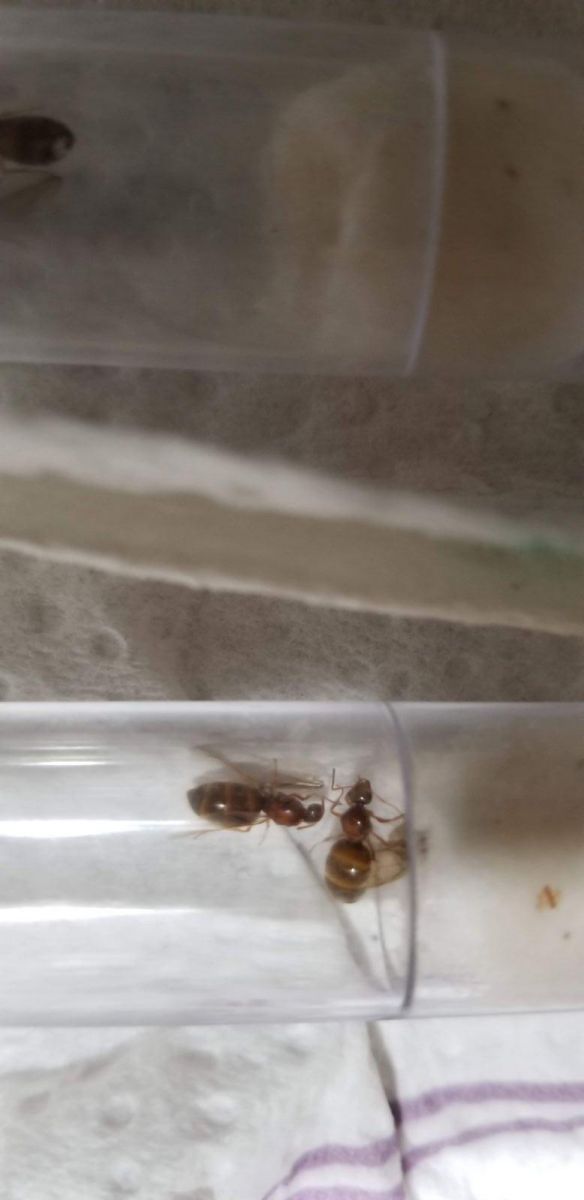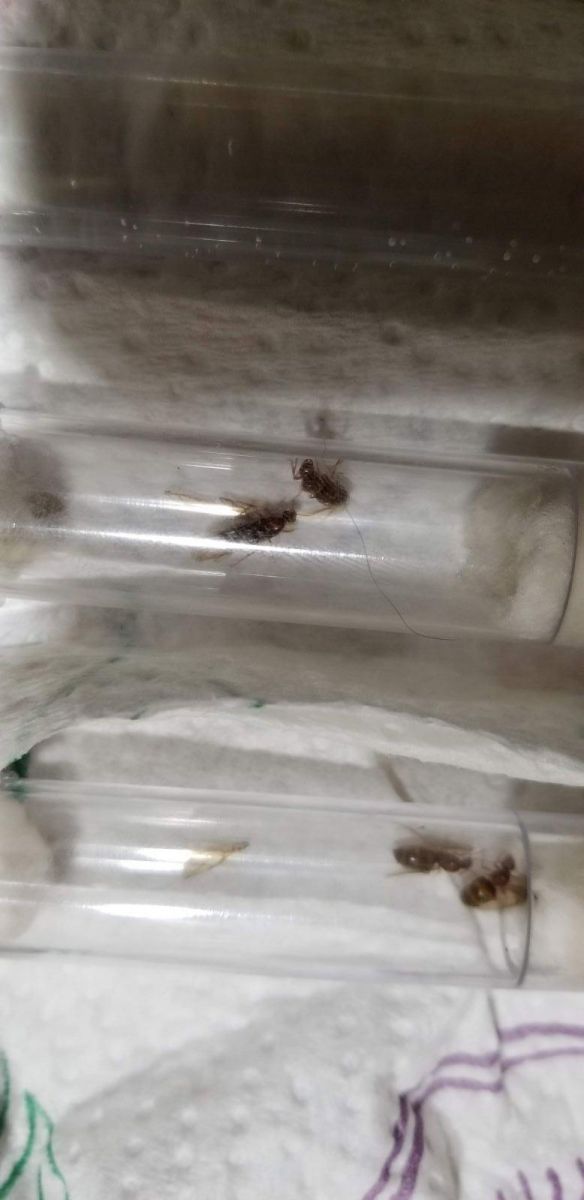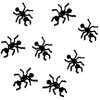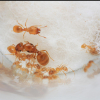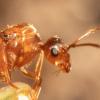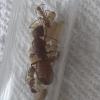Saturday April 13th 2019 was going to be the perfect day for P. Imparis Flights. The 3 days leading to it were rainy and Saturday was forecast to be in the mid 70s and partially sunny.
I was prepared for a full day of outdoor chores with an ulterior motive. Walking the dog and picking up sticks in the yard was a productive front.
The big maple tree in the center of the yard was my first stop. I noted the activity on the tree. Foragers of what looked like P. Imparis making sweeps of the channels in the bark. A swarm of small dark flying insects was hiding on the shade side of the tree. They would not hold still. I got a few good looks as they would land and immediately take off. Small and dark, but assuredly ants. I assumed they were male alates, but where were the females?
This was still early afternoon and I have a large yard to search so I harnessed the dog and started to walk. A few dozen steps in and a queen was spotted. Much bigger than the darker swarm near the tree and surprisingly red in the sunlight. She was flying above arms reach, as gracefully as she could manage, towards a large thicket. I was unable to see where she might have landed.
I had several similar encounters, but nothing caught, by the time I made my way back to the house. It was time for a break. Five minutes into relaxing on the back deck with my wife, a queen lands on the table in from of me. I scooped her up and created a test tube setup for her. This was around 1400 EST.
By 1600 EST I had 3 more queens and missed many more. From my vantage point on my deck I had watched them float to the ground under the branches of the maple. 3/4 I found frantically scurrying through the grass with a male alate still attached. The males were small and dark, extremely similar to the swarm i had witness in the shade of the maple earlier.
I had read P. Imparis was polygynous and one article even suggested pairing up queens to have a stronger start. I took this suggestion and combined my 4 queens into 2 setups stored them in similar fashion to my Lasius queens. I hope I am not making a mistake by combining them. I checked on them about a week later and all seemed well, a couple had shed their wings.
now is the big wait for brood. I am still waiting for Lasius brood to emerge and to break out the flashlight for Camponotus Pennsylvanicus as I heard they tend to fly at dusk or during the night.
